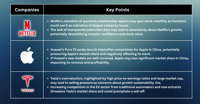Last Friday, Bank of Japan became the first Central Bank in Asia (third among the G-10 countries after Switzerland and Sweden) to adopt negative interest rate, slashing their interest rate to -0.1%. The announcement sent the USD/JPY rocketing close to 300 pips in the first hour and closed at 121 on the last trading day of January. However, they decided to maintain their stimulus at 80 trillion yen, which kind of tell us they felt that further expansion in stimulus would not help them achieve their inflation target under present situation. As growth around the world and oil prices remain weak, we can only look forward to see the effect of this move.
Oil has been on the watch-list since the beginning of 2016. After dropping to a record low of less than $28 a barrel, it bounced back to $33 on the back of comments and rumours from Russian and OPEC officials regarding possible cut in production. Nothing is firm at the moment but it is enough to provide some form of support to the oil prices. Central Banks around the world are finding it hard to cope with low/no inflation. If there is any decision to be made, it better be fast, any indecisiveness or delay may result in oil prices testing $28 again.
After hearing the recent FOMC statement, a lot of traders scaled back their expectation on Fed rate hikes to just once or twice this year as opposed to three to four times. From the looks of it, the chance of a rate hike in March is low, regardless on how good the upcoming NFP figures could be.
Reserve Bank of New Zealand is not spared from deflation risk either. In their statement last week, they are clearly opened to further easing. Watch out for upcoming diary prices, oil prices and CPI to have a feel on the possibility of RBNZ’s next rate cut. If diary prices continue to fall or remain weak, oil prices going below $30 and CPI in the zero or negative zone, then the next rate cut could be sooner.
Reserve Bank of Australia and Bank of England will present their rate statement and monetary policy this week respectively. We expect RBA to maintain an easing bias. China’s slowing down, equity market crisis and low commodity prices do not give RBA much room to maneuver. BOE is also under deflation pressure, but their other data are considered healthy, they should be keeping their neutral stance for now. Do not be surprise if the only hawkish member in the MPC voting decides to switch back to the neutral camp.
Top News This Week
Australia: Cash Rate. Tuesday 2nd February, 11.30am.
We expect figures to remain unchanged at 2.0% (previous figure was 2.0%).
UK: MPC Official Bank Rate Votes. Thursday 4th February, 8pm.
We expect figures to remain unchanged at 1-0-8 (previous figure was 1-0-8).
US: Non-Farm Employment Change. Friday 5th February, 9.30pm.
We expect figures to come in around 202K (previous figure was 292K).
Fullerton Markets Research Team
Your Committed Trading Partner













